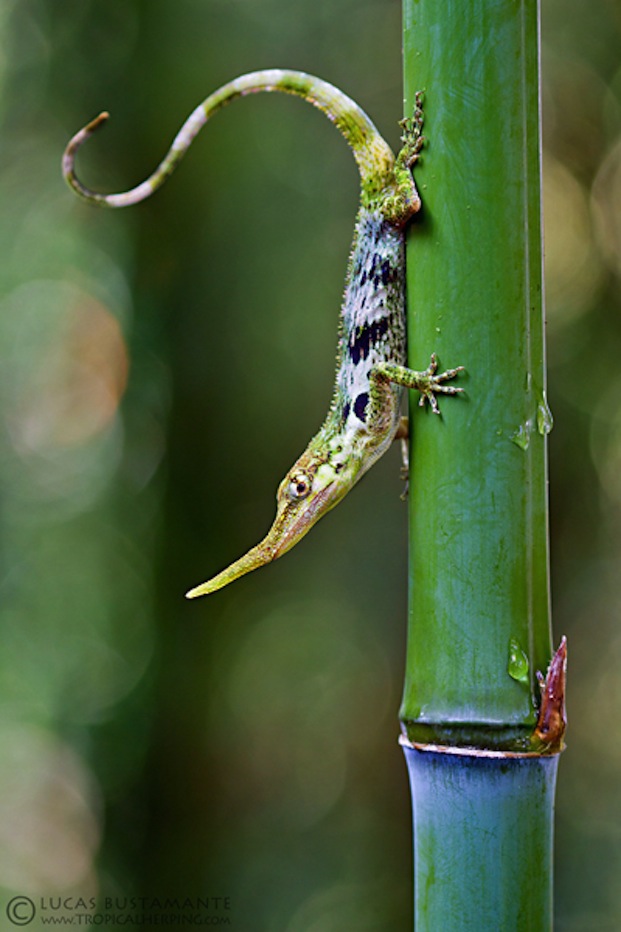
Once 'Extinct' Pinocchio Lizard Pokes His Nose Out

This ain't no lie: The Pinocchio lizard was thought to be extinct for 50 years, but has been rediscovered in the cloud forests of Ecuador.
After searching for the long-nosed animal for three years, a team of photographers and researchers found the lizard recently in a stretch of pristine cloud forest in the northwest part of the country, said Alejandro Arteaga, a co-founder of the educational and ecotourism company Tropical Herping, which conducted the search for the lizard.
Also called the Pinocchio anole (an anole is a type of lizard), the animal is named after a certain dishonest wooden puppet and was first discovered in 1953, Arteaga said. But wasn't seen between the 1960s and 2005, when an ornithologist saw one crossing a road in the same remote area in northwest Ecuador. This is only the third time scientists have spotted it since 2005, Arteaga added. [Album: Bizarre Frogs, Lizards and Salamanders]
Scientists typically look for lizards at night when most of the animals sleep, and when their coloring becomes paler and they are less likely to scurry away, Arteaga told LiveScience's OurAmazingPlanet. One of his colleagues found a single male Pinocchio anole clinging to a branch over a stream in January. The team then kept it overnight before photographing it in the morning in its natural habitat.

"After looking for so long … It was very thrilling to find this strange lizard," Arteaga said. The team then let the animal go.
Arteaga and his colleagues were searching for the Pinocchio anole because it was the last lizard they needed to complete their book, "The Amphibians and Reptiles of Mindo," a rural region a two-hour drive north of Quito, Ecuador's capital. The book was published this summer.
Pinocchio anoles (Anolis proboscis) are an endangered species and have been found in only four locations, mostly along a single stretch of road, according to the International Union for Conservation of Nature, a global environmental group. They have one of the smallest ranges of any lizard in the world, Arteaga said.
Sign up for the Live Science daily newsletter now
Get the world’s most fascinating discoveries delivered straight to your inbox.
The lizard's noselike appendage is a sexually selected trait that likely serves no functional purpose but to advertise a male's good genes; females of the species have no such "noses." Other examples of sexually selected traits include the peacock's brilliant tail-feathers. Extensive research has shown that these traits communicate to the opposite sex that the animals are fit and will sire high-quality offspring.
Email Douglas Main or follow him on Twitter or Google+. Follow us @OAPlanet, Facebook or Google+. Original article on LiveScience's OurAmazingPlanet.










